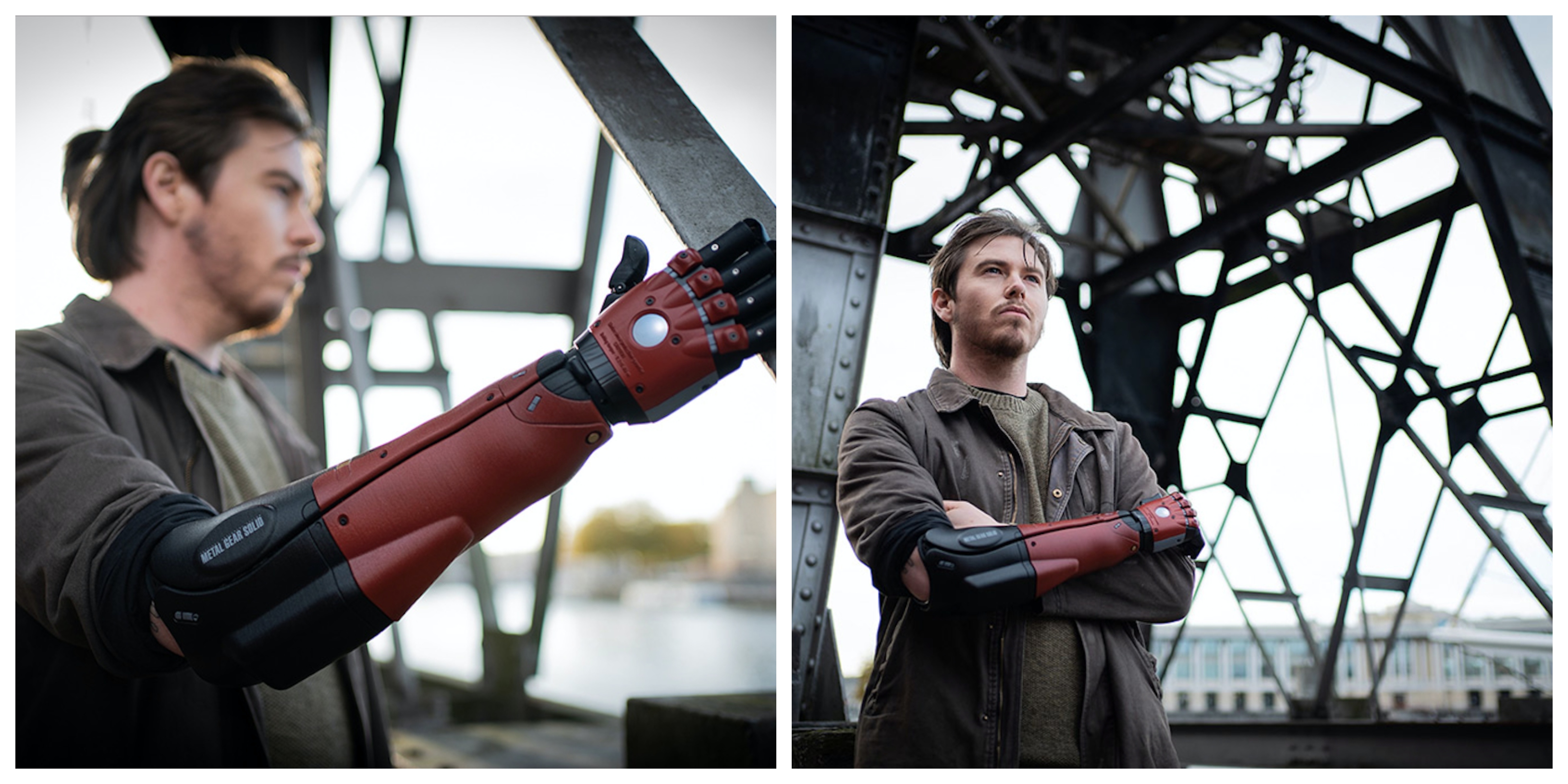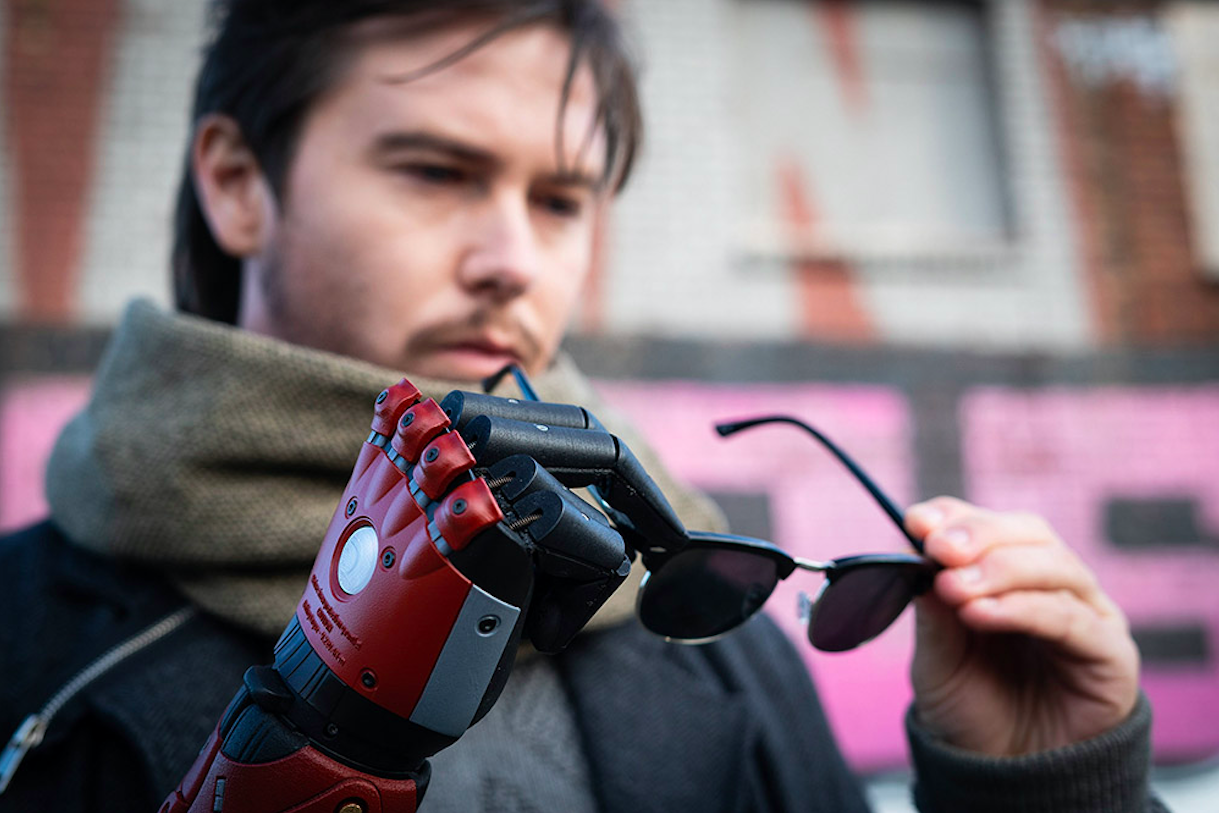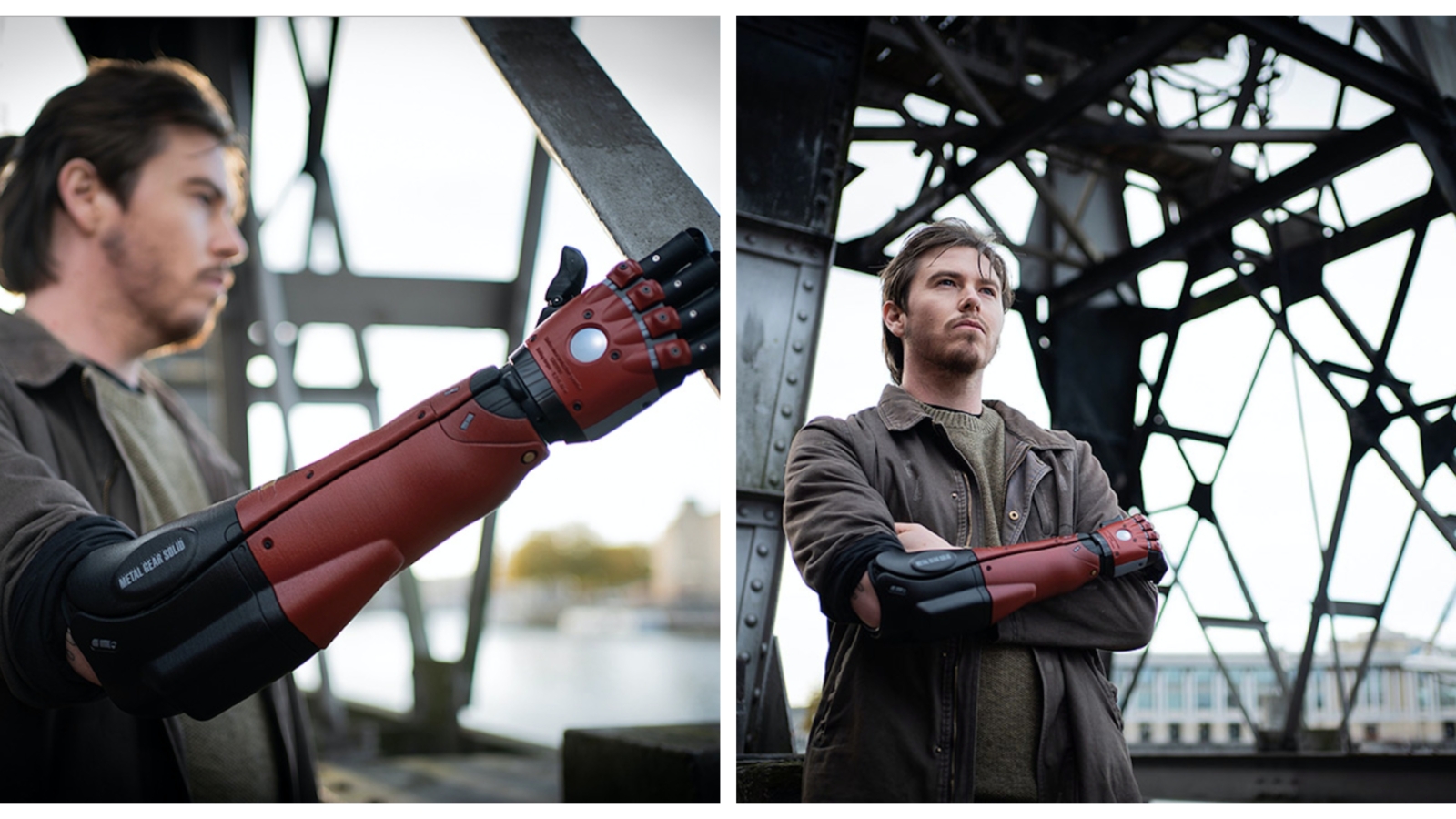Japanese video game developer Konami has teamed up with the prosthetic limb designer Open Bionic, to launch a 3D printed bionic arm inspired by the Metal Gear Solid (MGS) video game character Venom Snake.
The additive appendage has been designed for below-elbow amputees, and incorporates many of the features included on the company’s existing series of ‘Hero Arms.’ Open Bionics’ recreation has the dexterity to rotate up to 180° and behaves like a life-like muscle, giving it the potential to change the lives of young people with amputations around the world.
Takayuki Kubo, President at Konami Digital Entertainment, said: “We’re thrilled to see the iconic Metal Gear aesthetic of Venom Snake and his bionic arm burst out of the screen and come to life, in a dynamic fusion of technology and design that is changing the lives of upper limb amputees all over the world.”

Open Bionics offers a helping hand
Open Bionics is a prosthetic limb manufacturer that focuses on developing low-cost bionic hands, and with this goal in mind, the company launched its line of Hero Arms in 2018.
The firm’s production process effectively combines desktop 3D printers, such as the Ultimaker 3, with advanced scanning techniques to produce bespoke prosthetics for those in need.
Since the firm was set up in 2014, it has won widespread acclaim for its 3D printed bionic arms and various prizes, including a $1 million award at the UAE Robotics for Good Award. Despite this, Open Bionic’s prosthetics were initially considered too expensive to be made available on the UK’s National Health Service (NHS), hindering their wider adoption.
In order to make the prosthetics more accessible, North Bristol NHS and SBRI Healthcare launched a study adopting 3D printing. Within the project, Open Bionics worked with a group of 10 children as a means of assessing the potential benefits and drawbacks of 3D printed medical devices.
One of the focus group’s members, Tilly Lockley, 13, tried out a prototype device after losing her hand to Meningitis B when she was 15 months old. Speaking to the BBC at the time, she said that her new hand made her feel more confident, and that “instead of people feeling sorry because you don’t have a hand they’re like, ‘oh my gosh that’s a cool hand!’”
The company has since experimented with creating movie-themed limbs and collaborated with American film studios such as Twentieth Century Fox to create customized Hero Arms. In the project, Open Bionics secured a license agreement that enabled it to style its Hero Arm with futuristic themes, and Lockey showcased her new bionic arm in the movie Alita Battle Angel.
The 3D printed recreation of Venom Snake’s arm
Snake’s bionic hand first appeared in Metal Gear Solid V in 2015, and the design has become one of Open Bionics’ most requested recreations ever since. In the video game, Venom Snake loses his left arm in the ‘Ground Zeroes’ explosion in 1975, and replaces it with a red and black one, equipped with a detachable missile and a gadget to stun enemies.
Manufacturing on Demand
The company has now made an official version of the arm available, and although it may not have the same weaponry, it has still changed the lives of many MGS fans. To create the additive limb, Open Bionics has not only deployed its conventional printing and scanning approach, but it also allows users to customize the device through magnetic clip-on covers.
The bionic appendage has already been adopted by avid MGS fans like Daniel Melville who was born without a right hand, but now aged 29, he has become the first recipient of the new MGS design. The arm functions in a similar way to a life-like muscle, with varied capabilities from being able to break eggs or hold a phone, to using a lawnmower.
“This is unbelievable,” said Melville. “It’s everything I’ve ever wanted from a bionic arm. I’m an avid gamer and love Metal Gear Solid so much and to actually have Snake’s arm in real life is just insane.”
MGS fan James Young has also benefited from acquiring the new bionic limb, after losing his arm and leg in a train accident in 2012. In a project led by Konami and London-based sculptor Sophie De Oliveria Barata, Young’s battery-powered arm was fitted with gadgets such as Wi-Fi and a phone charger, and optimized to move and feel like the real thing.

A brief history of 3D printed prosthetics
In recent years, 3D printing has been used to create a wide range of customized prosthetic limbs, to help both children and adults in urgent need.
Researchers from the University of Lincoln have developed a prototype 3D printed sensor-operated artificial arm, that’s designed for children under two years old. Patients with upper limb amputation (ULA) require prosthetic devices, and in this case, the team’s novel device allows children to devise their own method of grasping objects.
Elsewhere in 2019, medical start-up myReflection has used 3D molding and scanning techniques to develop personalised breast prostheses for cancer patients post-mastectomy. The artificial body parts were created with an inner core and ISO-certified outer silicone, that can last up to four years depending on the user.
Additionally, 3D printed medical wearables manufacturer UNYQ, launched its own 3D printed leg socket called a UNYQ Socket. Using 3D printing enabled the company to create a lightweight device, with an enhanced alloy that’s traditionally used in prosthetic legs.
* This article is reprinted from 3D Printing Industry. If you are involved in infringement, please contact us to delete it.
Author: Shivani Chaudhari


Leave A Comment